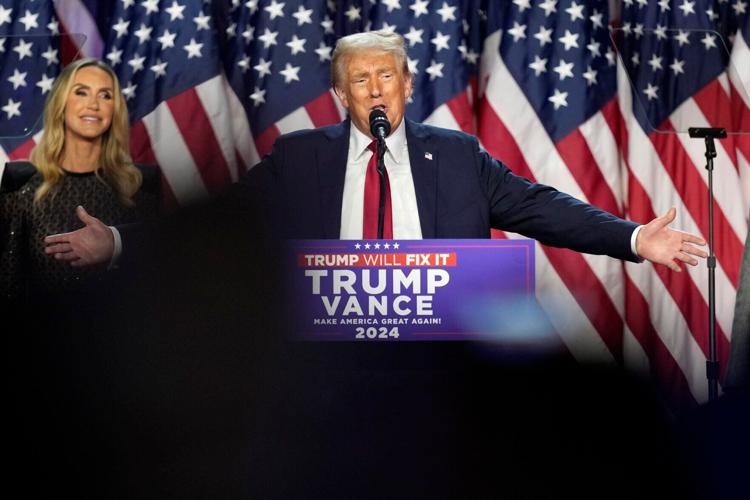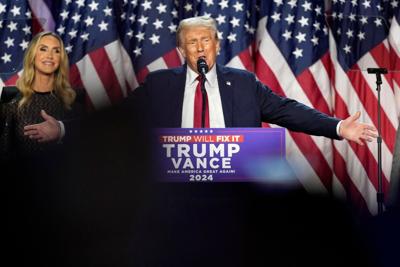Throughout this past , we learned plenty about swing states. We now know how many people in Nevada work for tips and how much fracking means to Pennsylvania. But what about our own state?
Let’s take a look — at ourselves.
Of Louisiana’s 3 million registered voters, 66% cast ballots in the presidential election. That’s lower than the 70% four years ago, but much better than the puny 36% turnout in the last gubernatorial election.
Louisiana, as expected, went for Donald Trump over Kamala Harris by a wide margin, 60% to 38%. It was the biggest presidential victory since Ronald Reagan won the state with 61% in 1984.
The highest vote percentage a presidential candidate ever received in Louisiana was 93%. That was won by Democrat Franklin Roosevelt in 1932 against Republican incumbent Herbert Hoover during the Great Depression.

Ron Faucheux
In presidential elections between 1880 and 1944, Louisiana voted Democratic 17 straight times. Between 1948 and 1976, Louisiana voted Democratic three times, Republican three times and twice for third-party candidates. But since 1980, Republicans won the state 10 times and Democrats twice. The last Democrat to carry Louisiana was Bill Clinton.
The Republican swing was underway when Richard Nixon carried Louisiana with 65% in 1972. But it wasn’t until Cajun country finally broke away from its Democratic moorings at the start of the 21st century that Louisiana turned reliably red in presidential elections.
Though Trump won by a bigger margin in Louisiana this year than four years ago (22 points vs. 19 points), he received more votes four years ago (1,256,000) than this year (1,209,000). That’s due to fewer people voting. The state’s Democratic vote declined as well, from Joe Biden’s 856,000 votes to Kamala Harris’ 767,000.
Nevertheless, Harris won three large parishes anchored by major cities: Orleans with 82%, East Baton Rouge with 54% and Caddo with 52%. That compares to Trump winning 55% in Jefferson, 64% in St. Bernard, 65% in Lafayette, 68% in Plaquemines and 71% in both St. Tammany and Bossier.
Surprisingly, Harris did better in New Orleans than she did in San Francisco, her hometown, where she received 80% of the vote.
Voter turnout — measured by the percentage of registered voters who actually cast ballots — tells an interesting story. In the presidential race in Louisiana, Whites turned out 72% and African Americans 57%, a sizable 15-point differential. While Whites make up 62.6% of the total voter registration in Louisiana, they made up 68% of those who actually voted in the election.
Republicans also turned out in higher numbers than Democrats, 78% vs. 64%. Independents and third-party voters, who constitute 28% of the state’s voter rolls, turned out at 55%. The deep-rooted enthusiasm of Trump’s supporters, plus the lack of a muscular Democratic turnout operation on behalf of Harris, boosted Trump’s advantage in Louisiana.
Voter turnout in New Orleans was 59%, seven points less than the state as a whole. Fifty-seven percent of Black voters turned out, compared to 64% of White voters. The composition of the city’s voting electorate was 52% Black and nearly 40% White — as compared to voter registration, which is nearly 54% Black and 37% White.
In East Baton Rouge Parish, which voted for mayor-president in addition to U.S. president, Republicans turned out in higher numbers than Democrats (77% compared to 65%), and Whites outvoted Blacks 72% to 60%.
Though African American voter turnout was relatively low statewide, Harris won an enormous percentage of Black voters who did show up. In seven overwhelmingly Black precincts in New Orleans, Baton Rouge and Shreveport, Harris beat Trump by a lopsided 95% to 4% margin. Nationwide, based on exit polling, Harris beat Trump 85% to 13% among Black voters.
One final comment: Low voter turnout in Louisiana has become a problem.
It’s understandable that more Louisiana voters didn’t vote in the presidential race, because the outcome in the state was a foregone conclusion. But falling voter turnout in state and local elections is alarming.
In 2023, only 1,062,000 votes were cast in the gubernatorial election. That’s far less than the 1,509,000 votes cast in 2019 when John Bel Edwards won reelection, or the 1,550,000 votes cast when Mike Foster won in 1995, or the 1,728,000 votes cast in 1991 when Edwin Edwards’ captured his fourth gubernatorial victory.
In the last mayoral election in New Orleans, LaToya Cantrell received fewer votes than any winning candidate since T. Semmes Walmsley in 1934.
We need to take a nonpartisan look at this trend. We can’t have a functioning democracy if people don’t vote.



